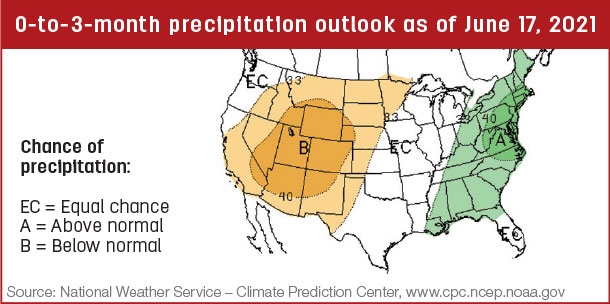Many producers target 6 to 8 months old to wean calves. However, weaning can occur much earlier or a little later depending on the circumstances for each operation. Below are a few different time periods (i.e., reasons for) when calves are weaned:
1. Early weaning at 2 months old for immediate reproductive benefits (used when cows are in poor body condition and are likely to not breed on time)
2. Weaning a month or two sooner than normal to preserve body condition (used to give cows that are already bred more time to increase body condition before calving again)
3. Traditional weaning at 6 to 10 months old
Cow body condition score should be the first consideration when determining to wean calves. It is much more cost-effective to preserve cow body condition by weaning sooner than to try and feed condition back on cows later.

Whenever possible, weaning calves on grass pastures is desirable, as this keeps costs down and allows calves to spread out during the weaning period. Average daily gains (ADG) of 0.75 to 1.5 pounds should be sufficient to optimize immune function. In many situations, this level of performance can be achieved with good grazing conditions alone or with limited protein/energy supplementation.
If forage quality is excellent, calves may only need to be feed for a week or so to get them used to coming to feed to meet any requirements for preconditioned calf sales or other marketing programs. With excellent forage quality, there is no need to continue feeding a protein or energy supplement after they are coming to feed well.
When done well, it is very unlikely for calves to get sick during the weaning process. However, biosecurity is an important aspect of the weaning process that, if overlooked, could lead to some unexpected health problems. During the weaning period, calves should not be exposed to any outside or newly purchased cattle. Additionally, be mindful of mixing calves from different herds you may own until they have been weaned for a while. One group of calves may have been exposed to or carrying a disease the other group has not yet been exposed to (e.g., if one group has a persistently BVD-infective calf).








